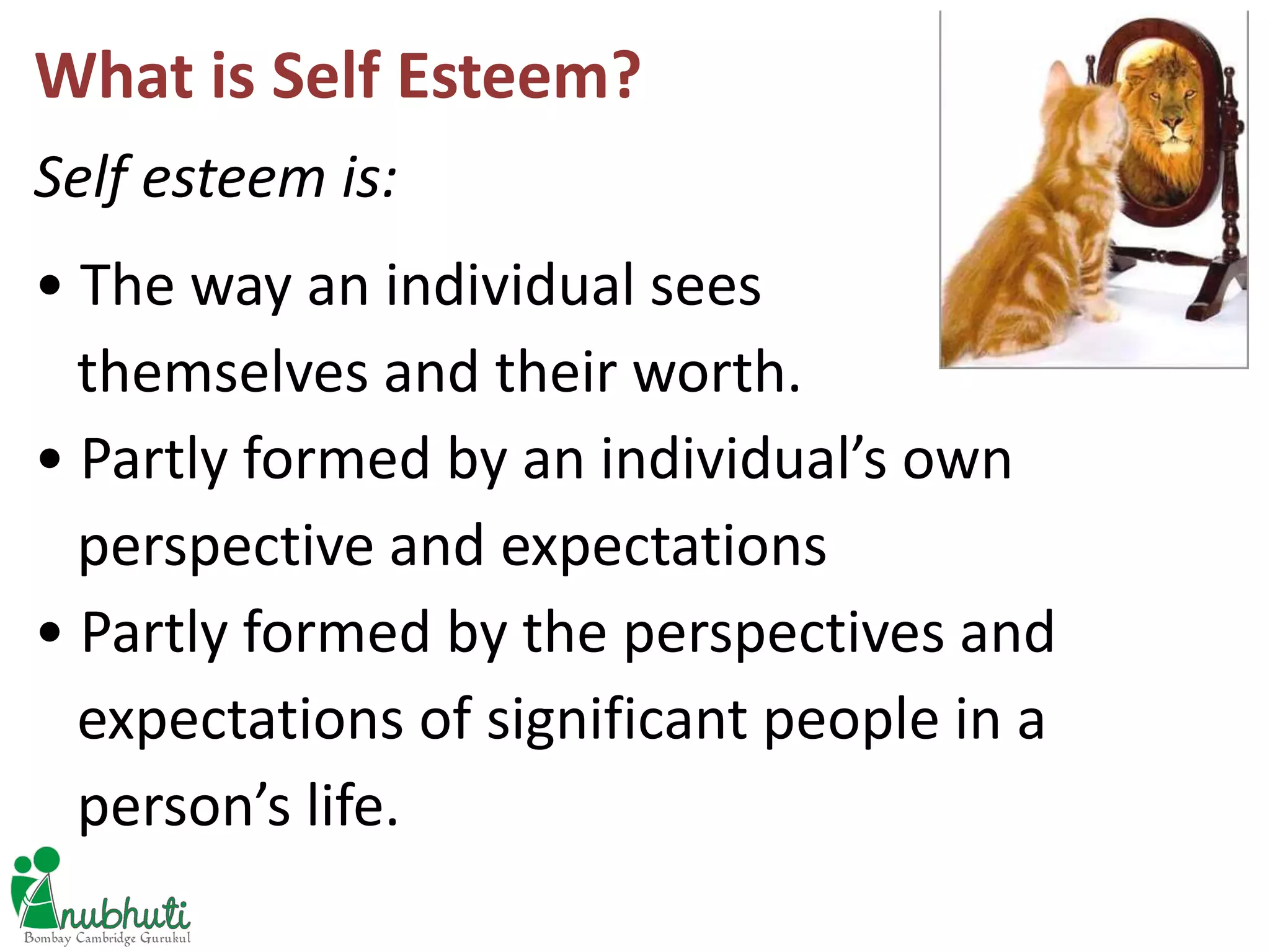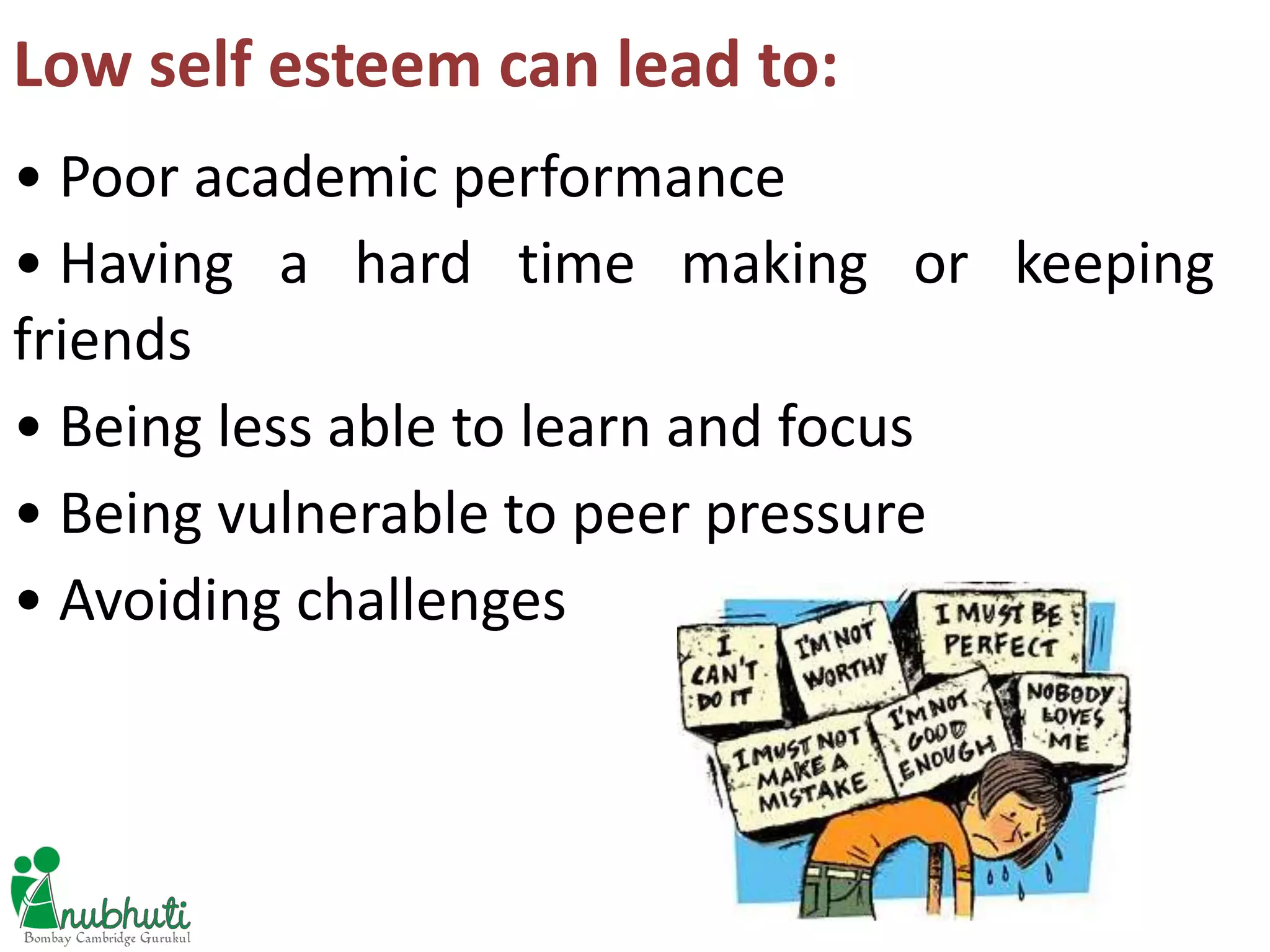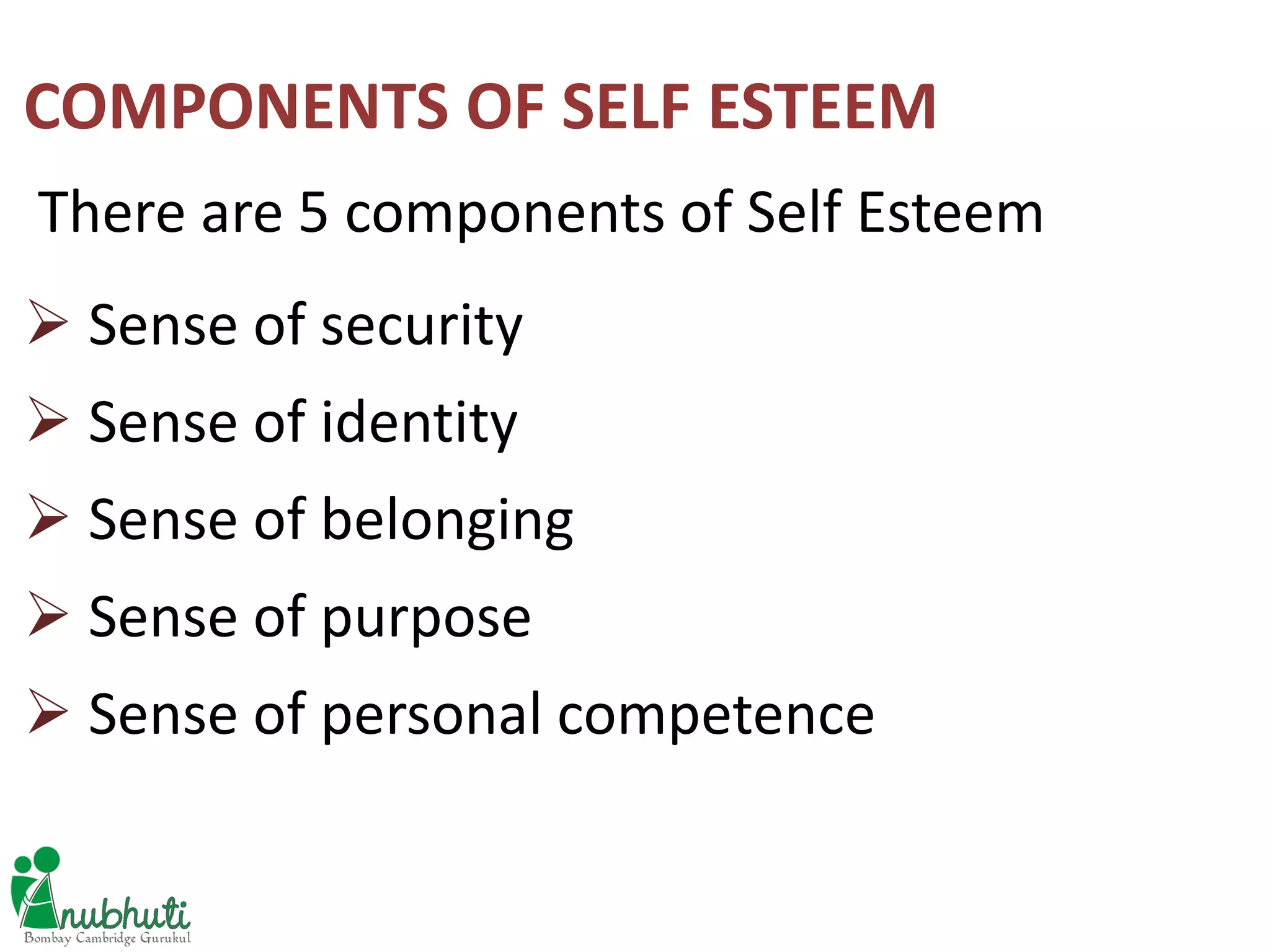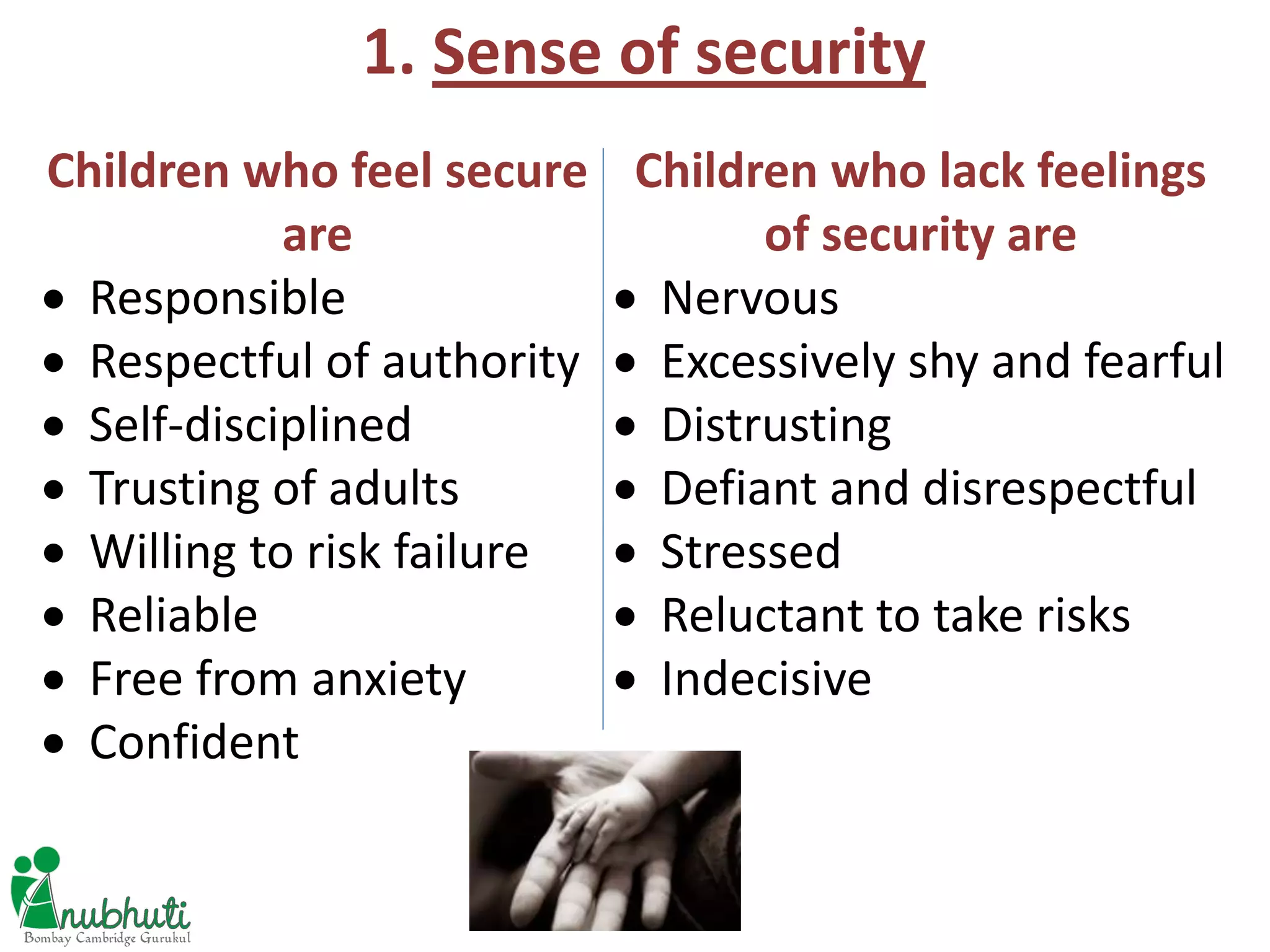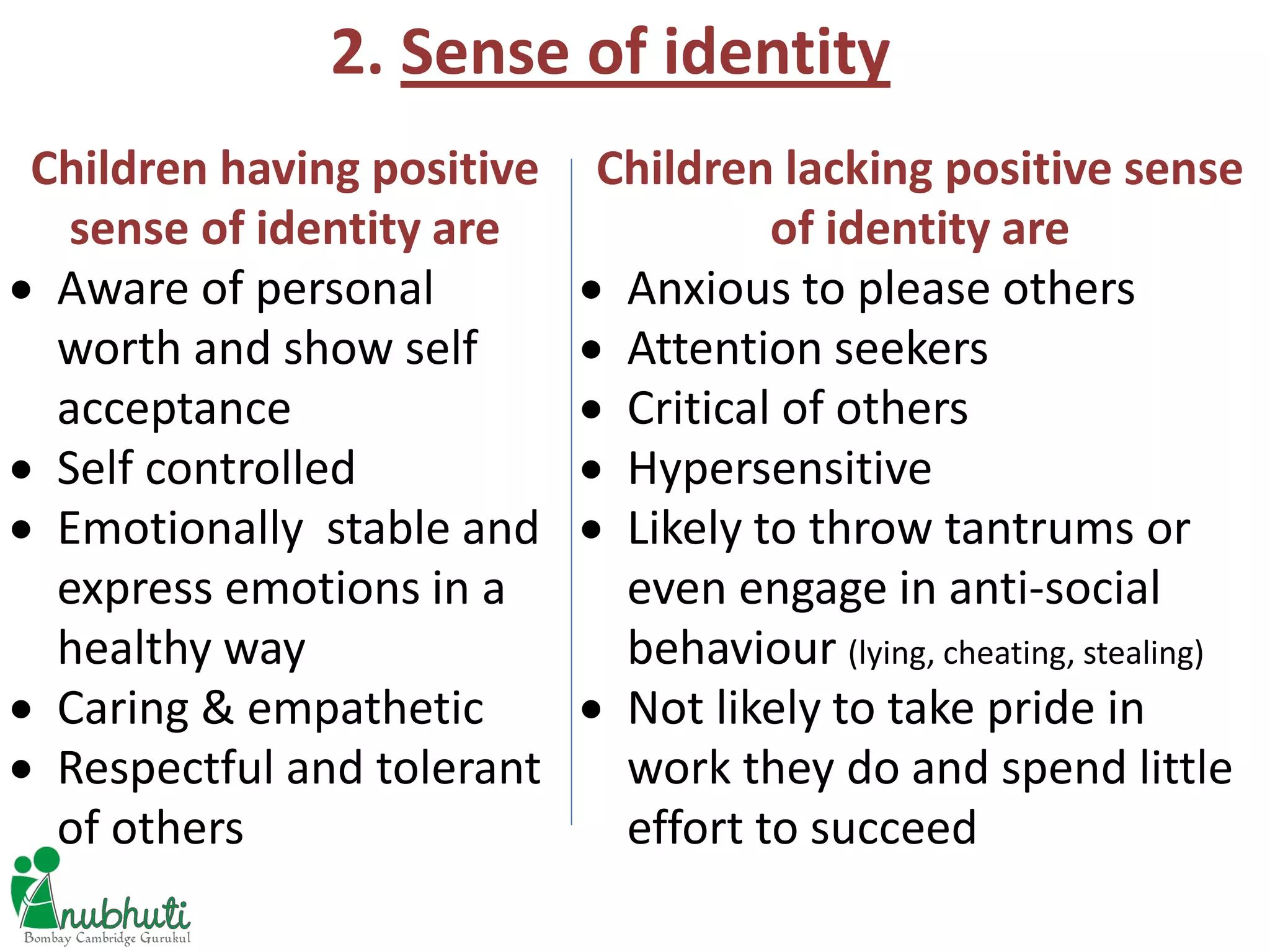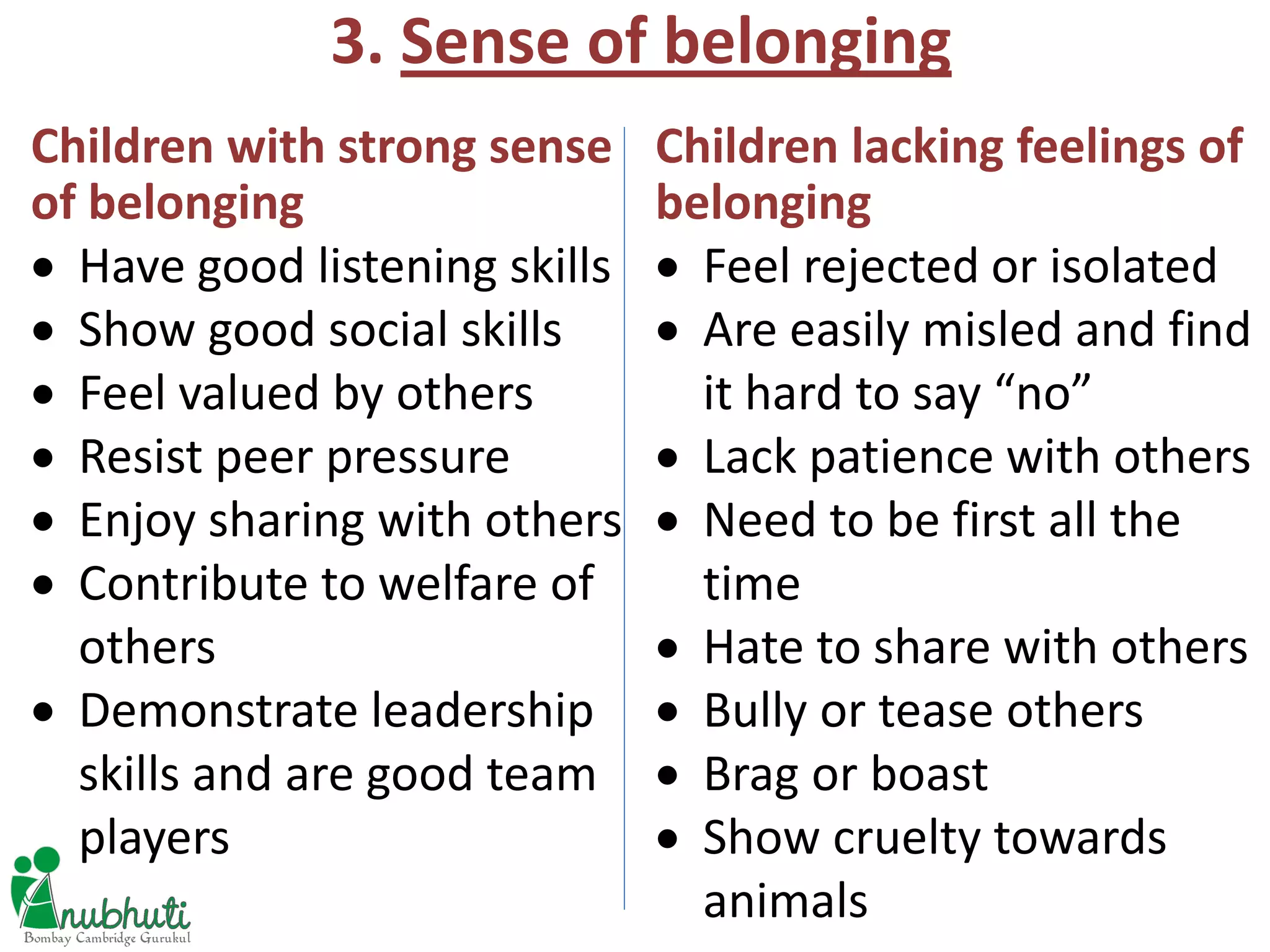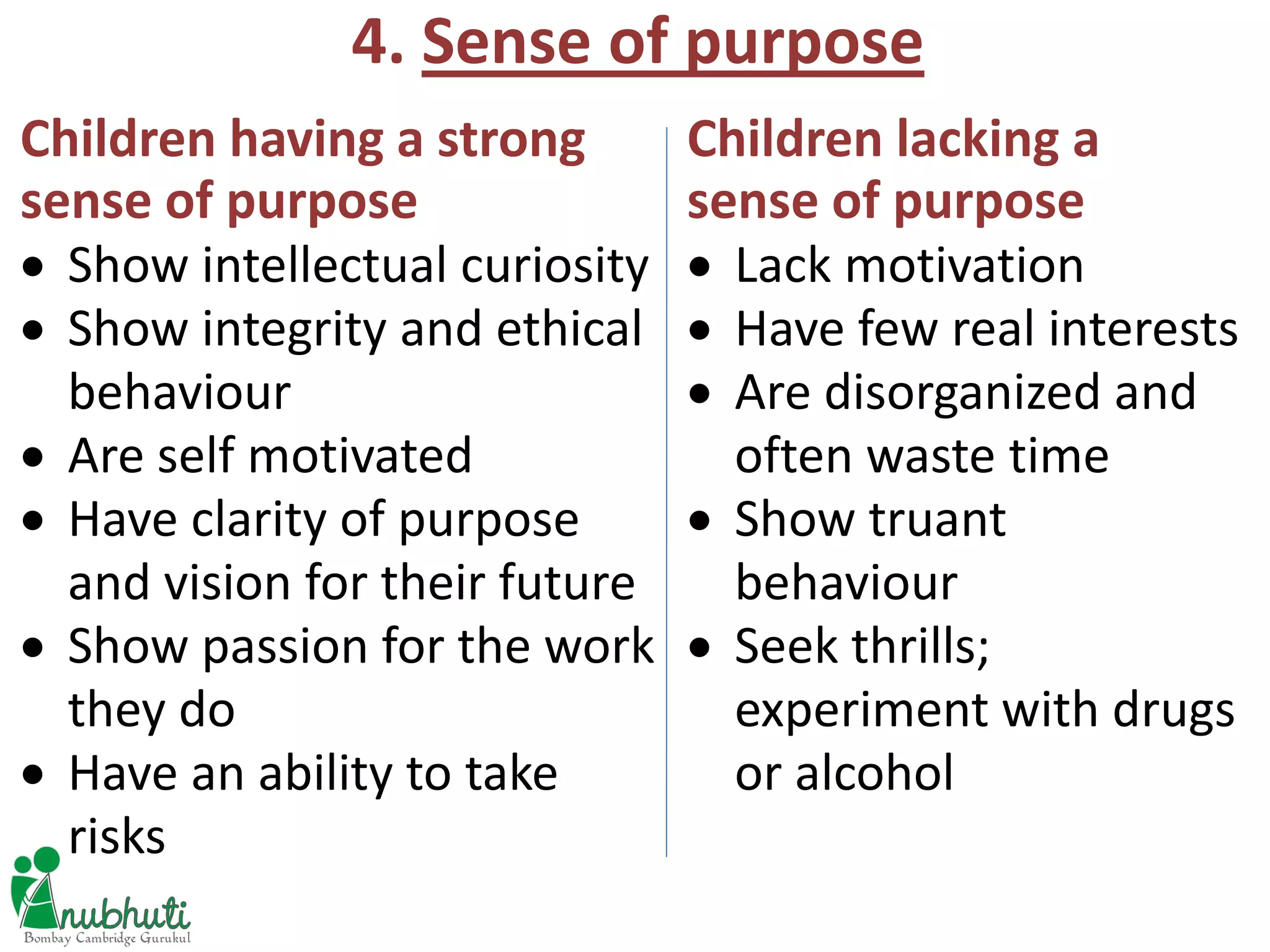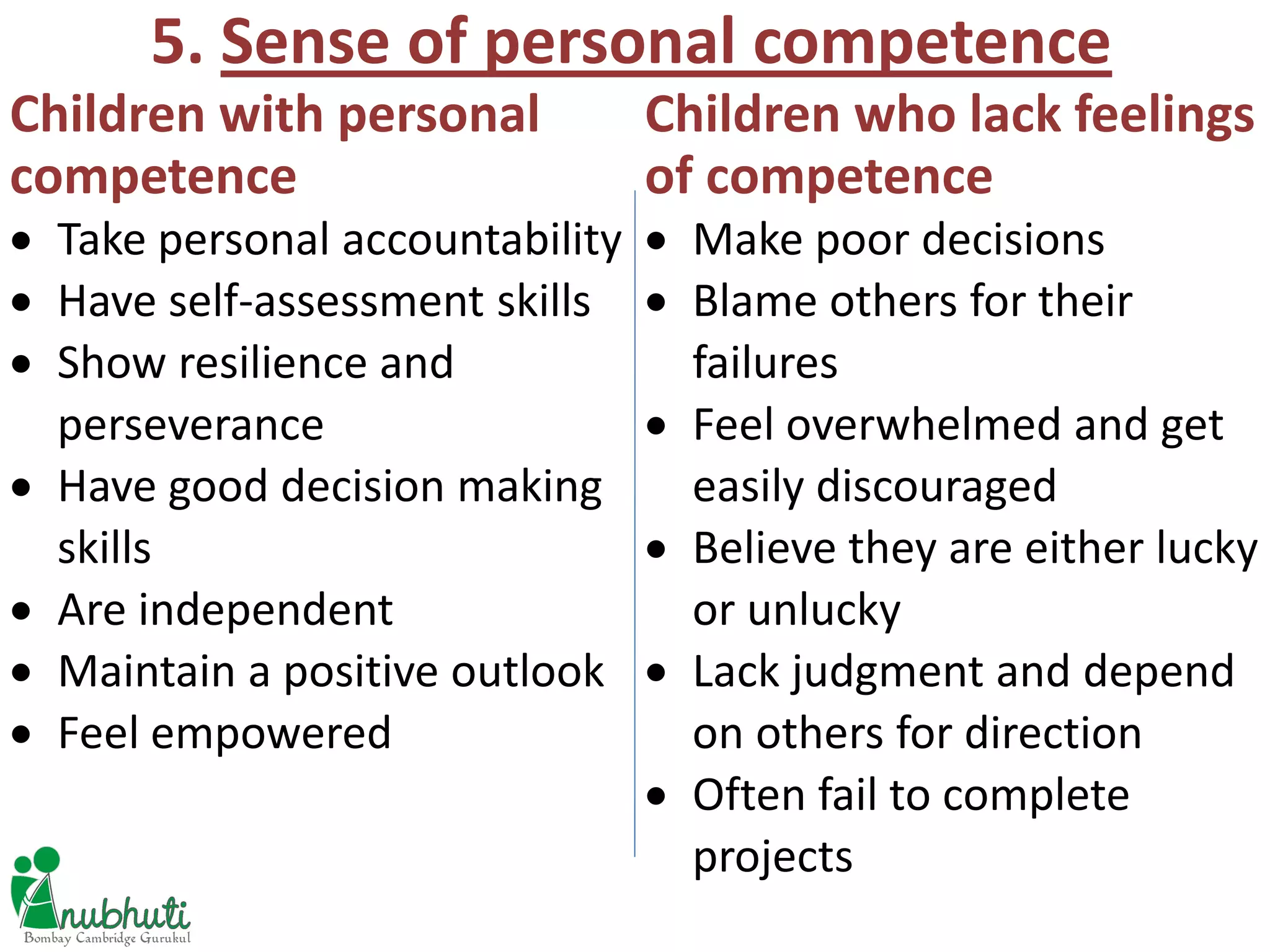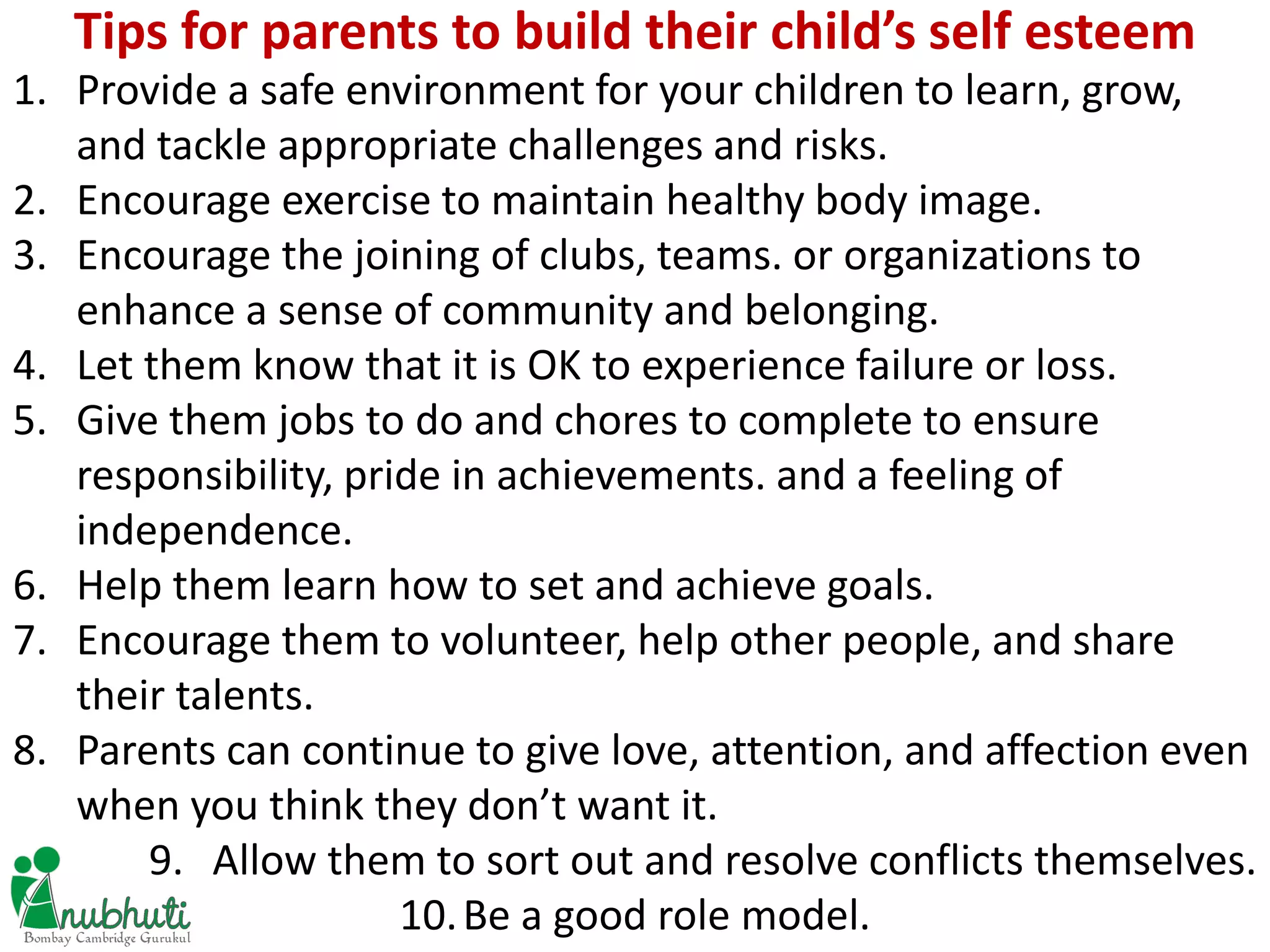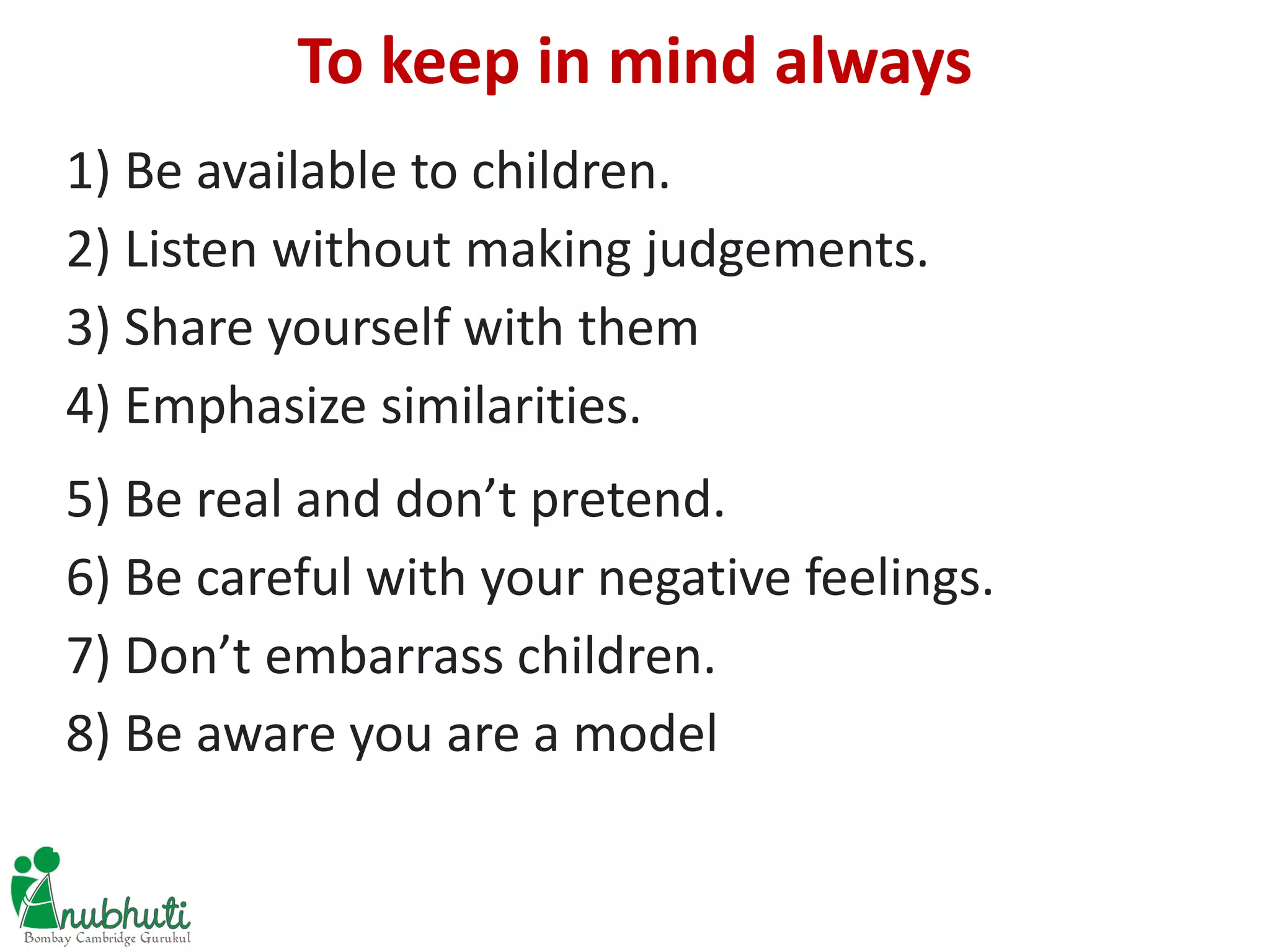The document discusses developing self-esteem in children, noting that self-esteem is formed by both a child's own perspective and the perspectives of significant people in their life. It identifies 5 components of self-esteem - sense of security, identity, belonging, purpose, and personal competence - and provides descriptions of behaviors associated with high and low levels of each. Finally, it gives tips for parents to build their child's self-esteem through providing a safe environment, encouragement, responsibility, and avoiding over-praise, over-criticism, and doing everything for their children.

